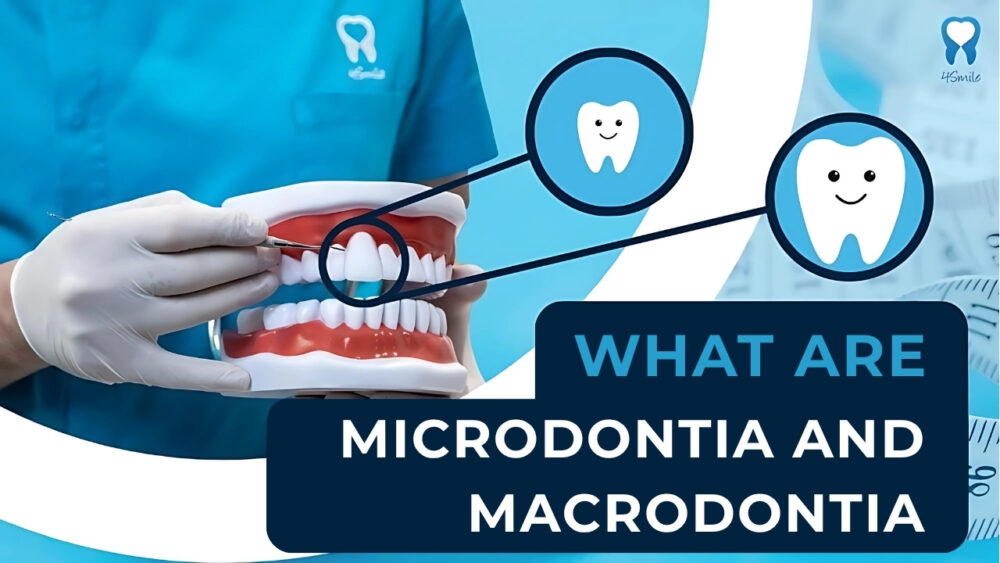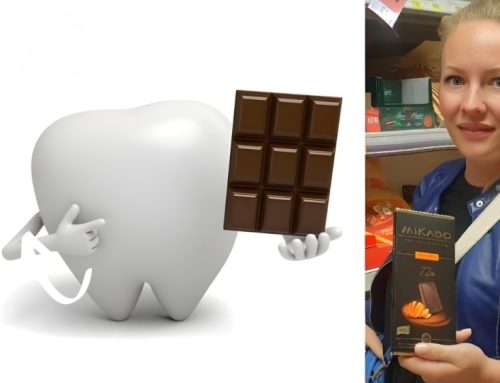Microdontia and macrodontia – Oversized and undersized teeth
The world of dentistry is filled with a variety of fascinating conditions that can affect the appearance of your smile.
Although our differences are what make us unique, problems arise when certain conditions disrupt the functionality of a smile.
Two such conditions that often go unnoticed are macrodontia and microdontia.
Macrodontia and microdontia are dental anomalies in which certain teeth are significantly larger (macrodontia) or smaller (microdontia) than the average size of other teeth in the jaw.
These teeth, which visibly differ in size from the rest, primarily create an aesthetic imbalance in the smile’s harmony, but they can also affect the functionality and health of the smile.
In this week’s blog by Dental Center 4Smile, learn everything about macrodontia and microdontia, including their causes, effects, and potential treatments.
MACRODONTIA – The challenge of oversized teeth
Macrodontia is a condition characterized by unusually large teeth.
These teeth can disrupt the harmony of a smile and overall oral health, and there are two main types of macrodontia: true and relative.
TRUE MACRODONTIA:
True macrodontia occurs when teeth are genuinely larger than normal, typically due to genetics or developmental abnormalities.
People with macrodontia often have one or two unusually large teeth in their mouths, and in some cases, two teeth may fuse together to form an extremely large tooth.
True macrodontia is often associated with a growth disorder, gigantism, where the entire body experiences abnormal growth due to excessive growth hormone production.
In addition to gigantism, macrodontia may be caused by other genetic or environmental factors, and it is more common in men than in women.
RELATIVE MACRODONTIA:
Relative macrodontia occurs when teeth appear larger because the surrounding teeth are unusually small.
This optical illusion can occur when one or more neighboring teeth are underdeveloped or missing, making adjacent teeth appear larger in comparison.
EFFECTS AND CHALLENGES OF MACRODONTIA:
While macrodontia may initially seem like a purely aesthetic issue, it can also significantly affect oral health and function.
HEALTH PROBLEMS CAUSED BY MACRODONTIA:
Due to the irregular size of teeth that can impact the alignment of other teeth in the jaw, maintaining oral hygiene can become more difficult.
Poor oral hygiene can lead to gum problems and increased risk of tooth decay.
FUNCTIONAL PROBLEMS CAUSED BY MACRODONTIA:
As mentioned, the difference in tooth size can cause functional issues, including an improper bite and misaligned teeth.
An uneven bite may place strain on jaw muscles during everyday activities like chewing, speaking, or eating.
AESTHETIC PROBLEMS CAUSED BY MACRODONTIA:
From an aesthetic standpoint, macrodontia can affect self-confidence, as oversized teeth are often highly noticeable in a smile.
TREATING MACRODONTIA
Treatment depends on the type and severity of macrodontia as well as the individual case. Common approaches include:
1) TOOTH REDUCTION
In cases of true macrodontia, overly large teeth can be reshaped and reduced using dental enamel thinning techniques and ceramic veneers.
Thanks to the ability of ceramic veneers to alter the shape, width, and length of teeth, they can effectively mask size differences, ensuring high aesthetic standards and a natural-looking smile.
2) ORTHODONTIC TREATMENT
Misaligned teeth and bite issues caused by macrodontia can be corrected with orthodontic treatment.
It’s important to note that orthodontic treatment is most effective during developmental stages-before the jaw fully matures and teeth settle into a fixed position.
Once teeth have become fixed in adulthood, correction becomes more difficult and less effective.
3) ORAL SURGERY
In more severe cases of macrodontia, oral surgery may be required to remove or reposition excessively large teeth.
Before any extraction, your dentist should professionally evaluate the situation to ensure no better alternative is available.
If extraction is necessary, dental implants or dental crowns may be required to restore full functionality and aesthetics to your smile.
MICRODONTIA – The challenge of undersized teeth
Microdontia is a condition in which teeth are smaller than average. Like macrodontia, it can be categorized into true and relative microdontia.
1. TRUE MICRODONTIA:
True microdontia occurs when teeth are genuinely smaller due to genetic factors or developmental issues.
This condition can affect one or more teeth, resulting in a disproportionate smile.
RELATIVE MICRODONTIA:
In contrast to relative macrodontia, relative microdontia makes teeth appear smaller due to the larger size of neighboring teeth.
This may occur when one or more teeth grow disproportionately larger.
EFFECTS AND CHALLENGES OF MICRODONTIA:
Like macrodontia, microdontia affects more than just appearance – it can influence both oral health and function.
HEALTH PROBLEMS CAUSED BY MICRODONTIA:
Because of size discrepancies, maintaining thorough oral hygiene can be more challenging.
Good oral hygiene is essential to prevent tooth decay and gum diseases such as gingivitis and periodontitis.
Individuals with microdontia should prioritize regular dental checkups and professional cleaning.
If you’re unable to treat microdontia or macrodontia, regular visits to the dentist for gum health checks and tartar removal can help maintain dental health.
FUNCTIONAL PROBLEMS CAUSED BY MICRODONTIA:
Like with macrodontia, microdontia can interfere with smile functionality, making chewing and speaking more difficult.
Smaller teeth may also create gaps within the dental arch, causing spacing issues.
AESTHETIC PROBLEMS CAUSED BY MICRODONTIA:
Microdontia also affects smile aesthetics, as small teeth may make the smile appear unbalanced or incomplete.
TREATING MICRODONTIA
In most cases, treating microdontia involves less invasive procedures than macrodontia. Treatment options include:
1) TOOTH ENLARGEMENT
To enlarge undersized teeth, dentists can apply composite bonding material to build up the tooth’s size and proportion.
Composite bonding is a good functional and aesthetic solution, although it doesn’t offer the same high-end aesthetics as ceramic veneers.
Ceramic veneers are the most effective aesthetic solution, as their translucency mimics the natural look of teeth.Additionally, ceramic veneers are stronger and more durable than composite, and they are highly resistant to staining-unlike composite.
However, ceramic veneers can only be applied if the tooth is healthy.
If the small tooth has been treated before, and the base can provide sufficient support, dental crowns can be used to increase its dimensions.
2) CLOSING DIASTEMAS AND CORRECTING THE BITE
Orthodontic treatment is used to close gaps between teeth and correct bite alignment.
As mentioned earlier, orthodontic treatment is most effective during jaw development.
If orthodontics is not a viable option, the smile can be harmonized through planned placement of dental veneers or dental crowns.
Prosthetic restorations can help conceal gaps, shape the bite, and enhance the overall aesthetic of the smile.
CONCLUSION
Macrodontia and microdontia can both present aesthetic and functional challenges.
However, modern dentistry offers a variety of effective treatments to address these issues.
Whether it’s reducing oversized teeth or enhancing the appearance of undersized ones, dentist Ivan Antolković has the tools and expertise to help you regain your confidence and oral health.
Take the first step and join us on the journey to a beautiful smile!















